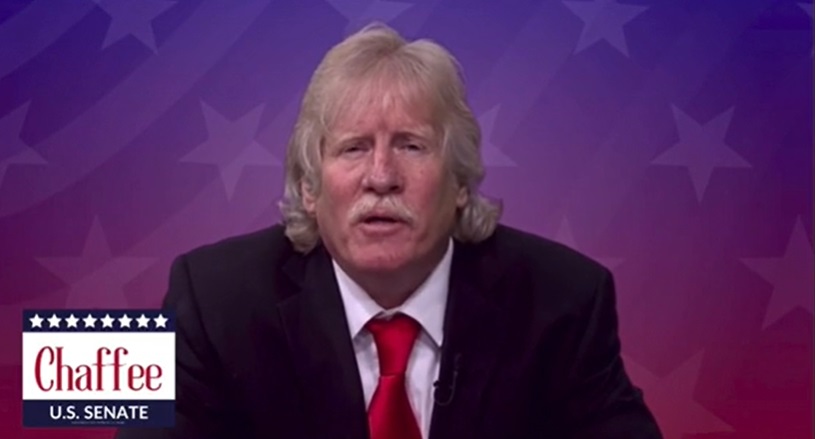Maryland voters could be forgiven for not noticing a race for U.S. Senate is on the ballot.
There has been virtually no coverage of a contest for which you could easily ask a trivia question: Who is Democratic Sen. Chris Van Hollen’s Republican opponent for re-election? His name is Chris Chaffee.

Sen. Chris Van Hollen
Van Hollen has raised $8.5 million to keep this seat and has $2.2 million cash on hand as of Sept. 30, according to the Federal Election Commission. He has listed spending $1.5 million on advertising, but he’s not flooding the channels with ads.
Chaffee has no filings with the FEC, which implies he has raised and spent less than $5,000. He does have a modest website.
All of which suggests that the GOP has totally given up on this Senate seat.
Chaffee hasn’t. He’s run for the U.S. Senate twice before, which is probably one of the reasons he’s the GOP nominee this time, in addition to having his name at the top of the Republican primary list of 10 Senate candidates.
Chaffee got 50,514 votes, spending nothing reportable compared to the biggest spending Republican, wealthy businessman James Tarantin who spent $184,000 and came in sixth, getting 20,000 votes, about $9 per vote.
In 2016, Chaffee ran for U.S. Senate in a field of 14 Republicans and got 13% of the vote (52,000 votes), the second highest vote total over eventual nominee, Del. Kathy Szeliga. She was the GOP candidate against Van Hollen in his first race for Senate. He had been a congressman, state senator and state delegate.
In 2018, Chaffee again came in second in the primary with 24% of the vote (42,000). Tony Campbell — also the top name on the GOP primary ballot — was the eventual nominee against Maryland’s longest serving politician, Sen. Ben Cardin.
In 2014, Chaffee made what appears to be his first bid for Congress against longtime Rep. Steny Hoyer. Chaffee got 35% of the vote, pretty good for a Republican. The highest percentage any Republican has gotten against Hoyer in 21 elections was the 45% garnered by a then very young Larry Hogan Jr. in 1992.
Two Republican senators
Maryland politics has changed much in the last half century.
Fifty years ago, both U.S. Senators from Maryland were Republicans. In 1976, a Democratic congressman from Baltimore City named Paul Sarbanes took on incumbent Republican J. Glenn Beall and beat him with 59% of the vote. Sarbanes would hold on to that seat for 30 years, a record five terms for Maryland.
Moderate Republican — some might even say liberal Republican (an extinct species) — U.S. Sen. Charles Mathias served three terms till 1987, when he retired. He was replaced by Democrat Barbara Mikulski who would also serve 30 years in the Senate, the longest tenure of any woman thus far.
Paul Sarbanes’ son John has represented the 3rd Congressional District in its various misshapen forms for eight terms now, the seat his father once held.
Reconfigured yet again last year after being one of the most gerrymandered districts in the country, John Sarbanes is seeking reelection to his ninth term.
He is facing perhaps his best-known Republican challenger in years, Yuripzy Morgan, a lawyer and former radio talk show host. Morgan has raised $403,000 this year, far outpacing Sarbanes. But Sarbanes still had three times as much cash on hand ($631,000) as of Sept. 30.
Over the past few months, Sarbanes has sent three mailings to constituents using his congressional franking privileges – meaning taxpayers foot the bill for printing and postage.
Republicans like to point out that the large campaign signs now popping up don’t use John’s first name – “Sarbanes Working for Us” — continuing to benefit from the legacy of his father.







Recent Comments